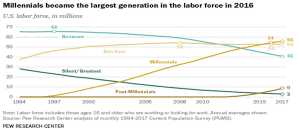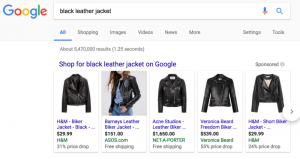Contributor Alex LePage tells the story of a furniture retailer that leveraged intent data to great benefit.

This past summer, the Gartner Group surveyed people some 215 people who are responsible for the digital-commerce strategies within their companies; 59 of the respondents represented retail companies.
The study, called “Gartner Survey Shows Retail Marketers Need to Focus More on Digital Commerce Strategy, Less on Promotions,“ shows that the chief marketing officers at retail organizations aren’t exactly driving the digital strategies for their companies. As Gartner observes, these marketing teams need to stop limiting their efforts to promotions and actively become active participants – key drivers, even – of their organizations’ e-commerce strategies.
Easier said than done? Perhaps. The pace of change in the way consumers interact with brands (and make purchasing decisions) has transformed the role of marketing; and, this has been a source of challenges for plenty of marketing teams, for good reason.
Complexity Is The Rule
Marketing has always been about telling a great brand story and communicating it to the marketplace. But since the advent of data-driven programmatic (not to mention cross-screen) marketing, the complexity of getting that message out has increased exponentially. To do that, as Gartner explains, today’s marketing organizations need “expertise in data analytics, content marketing and customer engagement to better target, acquire and retain customers.”
Great advice, but what does that look like in action? If you’re a CMO for a retailer, how does this advice play out in your day-to-day activities?
Rather than go into a whole lot of programmatic theory, I’ll share a real-life example.
Not too long ago, we worked with an office-furniture retailer that was new to the market. Though hardly a household name, the company had other attributes going for it, namely an excellent suite of products that its designers, employees and customers were passionate about. Discounts and promotions weren’t an option.
To gain new customers, the company needed to identify high-quality and scalable sources of potential clients to target for its ads. Doing so required massive amounts of intent data (aka in-market data).
Intent Data
Here’s the beauty of digital marketing: as consumers click through the web, they generate signals about their intents, preferences and loyalties that clever marketers can capture and act on. Someone who’s interested in furnishing a new office space may look at architectural sites for inspiration, visit various office retail sites, search for particular office items, and perhaps use a comparison site.
The above actions combine to form signals that indicate when consumers are actively in-market for a particular product.
A key component to intent data is immediacy. How quickly can the retailer target and engage a consumer who is showing active intent? Immediacy may not be as important if you’re selling mortgages or cars. But if you’re a retailer seeking to win consumers who’ll make a purchasing decision in the next 10 minutes or 72 hours, immediacy is highly relevant.
For the office-furniture retailer, some 55% of its conversions occurred within 24 hours of the consumers seeing its last ad (notice I said ‘last’ ad; as a new company, up to 12 impressions were required to gain brand awareness among the retailer’s target audience). That meant the retailer had a 24-hour window to message consumers whose online behavior signaled their intent to purchase office furniture.
Finally, time of day turned out to play an important factor in the purchase cycle. Customers converted most frequently in the afternoon – insight that informed campaign criteria, such as adjusted bid price and frequency caps to ensure the most efficient buying and engagement costs.
The Payoff
By collecting and analyzing intent data – and gleaning insights into time of day and frequency to inform campaign strategy– this retailer saw a 35% lift in return-on-ad-spend. And they never once offered a coupon to prospects in this campaign.
The Gartner Group is correct in advising retail CMOs that discounts and promos aren’t always the best way to grow your business. Long-term success lies in capturing and using intent data.
But does this mean that you need to build a team of data analysts before you can stop relying on promotions that affect your margins? Absolutely not. If your team isn’t built up yet, you can (and should!) always leverage the knowledge base of your programmatic partners.
Some opinions expressed in this article may be those of a guest author and not necessarily Marketing Land. Staff authors are listed here.
(Some images used under license from Shutterstock.com.)
Marketing Land – Internet Marketing News, Strategies & Tips
(304)
Report Post





